low oxalate foods list 2016
 Could You Benefit from a Low Oxalate Diet? - DrJockers.com
Could You Benefit from a Low Oxalate Diet? - DrJockers.comSite Categories How to Eat a Low Oxalate Diet LISTAS – And LISTSI knows everyone is looking for the list. Here is one of . We have downloaded a version on your site to a separate document so it opens with a click to . Knowing you with it. He'll tell you a lot about what you need to know. A lot of things will surprise you. You're not as restricted as you think you are or what they've told you. A more dramatic list is distilled from the big list. There's the culprits here! Probably not very high in oxalato as far as we know – with some exceptions. Note that the amount is critical. For example, black pepper is high in oxalate, but the quantities used are small enough that total oxalate intake is insignificant. The reliable source, as it turns out, needed some update. , professor at the University of Alabama School of Medicine, was kind enough to review the work of who is a professor of Human Nutrition and Food Option at the University of Wyoming and determine which food entries on the Harvard list needed to change. We cannot change the original but we have updated our lists accordingly and updates scored with *** marks. So the lists here are the most recent published available today. Eating a low oxalate diet can be overwhelming and difficult to incorporate into your daily life. I just launched a course called the Kidney Stone Prevention Course to help you understand how to implement your doctor's prescribed treatment plans. DIVIDE AND CONQUERCONQUERFOODS A WORRY AboutA Food List We have created two graphics for this article. Of the 177 foods on our list of teachers, many are of interest but can be used in your diet if you control the size of the portion and how often you use them. Here they are. The graph shows mg of oxalate in a common portion. The details of portions . Foods have in common that all contain at least 40 mg/serve. All other foods we have reliable data have less oxalate per serving. Your budget is about 100 mg/day. What does this graph mean? Does it mean you can never have chocolate, or an oven potato? No. It means that if you want to use your entire budget in a gift, do it, but follow up and make sure you don't get out of any food or any day. Take your potato in the oven, but maybe share half with your partner. Or, have some hot chocolate but do it with milk. Eat your cashew nuts, but pay attention to how many. If a handful leads to ten, you can't have them. FOODS AVOID The chart on the left is of the few dangerously high oxalate foods. There are only six foods, but spinach, being worse of all, has two tickets. Be careful with this plot because of its scope. It starts at 100 mg/portion and rises to 755 mg/portion in just 7 steps, so the distance from miso soup to spinach is approximately a 7-fold increase. Rhubarb and spinach are so high that you can't eat them. The rice bran is something that few will lose, the same for wheat oats. People like almonds but have a hard time controlling the size of the portion. If you can keep it to 11 almonds a day – the size of the portion that gives 122 mg of oxalate, well. If not, stay away from them. If you have to eat any of these foods, caution is just a strong enough word. You sure you need to eat them? What are we saying? We are saying that oxalate is common in food, and that you have to be careful, but care is a scarce resource. How many care can you give every bite? The graphics say that if you eat moderately high oxalate foods – the first graph – be careful. Look at portions. If you are eating one of the six dangerously high oxalate foods, stop eating it. It's very hard to be careful with those six foods. You have too much oxalate so most of you can handle. So, just say no. Why do you believe our data? These data came from a great effort at Harvard Public Health School. A world-class expert has cured him twice. Harvard may be wrong and can also Ross Holmes, but both tend to be wrong less often than average people trying to put complex data into the public domain. We have always appreciated comments, and if someone has a peer-reviewed publication with different levels of food oxalate than ours, we will read the paper and see if it justifies our change. Medical research is infinitely argumentative, and food oxalate is not an exception, and finds some great variations. Because the results are hard to get from PubMed It will open as a Google document. From the sites, the Harvard site – used here as our reference, and the Wake Forest site – which is a legacy of an outstanding research group have the majority to be with me. Shed through comparisons between them in the 4 graphics and in the large table at the end. All differences are modest. The list of hyperoxaluria and paper oxalosis has been removed from your site. You need a list? Sure, a list is nice. But we helped you here. Lists can reach hundreds of foods. The image is meant to focus. Here are the ones that focus. Many of you leave the doctor's office thinking you will never be able to eat a fruit or vegetables again. If that wasn't bad enough and the nuts are gone, too. Some of this is sadly true, most of them are not. I am here to bring you good news: Almost everything, high oxalate or not, can be safely incorporated into your diet. Do you need a low diet in oxalate? You can if your stones contain calcium oxalate crystals and your urine oxalate is high enough to pose risk. If you need a low oxalate diet, what is your target? Less than 100 mg of dietary oxalate is good; less than 50 mg is ideal. If you want to read some of the science about urine oxalate and the risk of stones and how we get to the goals of diet oxalate, it is summarized at the end of this article. Here we assume you need to lower the oxalate in your diet. CALCIUM FIRST Low calcium diets can raise urine oxalate, and the solution can be as simple as a proper intake of calcium. There are all the reasons for . When diet calcium is low. Before changing your entire life, ask yourself if you are avoiding calcium foods. If so, add them and ask your doctor to check your urine oxalate again. It may fall enough that a low oxalate diet is not necessary. If the low intake of calcium is not your problem, and you need a low oxalate diet, here is my take on how to do it. What is the purpose of solvent? Typical diets contain up to 200 – 300 mg of oxalate. For the prevention of stones, a reasonable objective is less than 100 mg of oxalate per day. An ideal would be approximately 50 mg daily if that can be achieved. To get there, consider the content of oxalates in common portions of all foods, and according to a plan for yourself. FRUITSFRESH Everyone who comes to me is very unhappy thinking they can never have a berry again. This is Baloney. The only berry that is very high in oxalate is raspberries (see list). On the other hand, people do not realize avocado, oranges, dates, and even grapefruit and kiwi are very high and need caution. This doesn't mean you can never have these healthy treatments. If you incorporate any of these high oxalate fruits in your morning yogurt, you can reduce some of the effects of oxalate content. See also their portion sizes. You can't really eat much at any time. The dates are not a good bargain: A date is 24 mg! CANNED O DRIED The canned pineapple is a problem. Dry fruits have to be a concern because water is taken out, so a "portion" of dried fruit can be gigantic in the content of oxalate. The figs, pineapple and plums are outstanding. Just think: 1/2 cup dry pineapple is 30 mg – not much fruit for much oxalate. If you want dried fruit, think of apples, apricots and blueberries as the lowest oxalate options. VEGETABLES The spinach and the ruibar are clashes; stay away. Other vegetables that you need to be aware of are tomato sauce, nabs, okra and yams (sweet potatoes) along with different beans. I'm not in the business of taking people's healthy foods. But in the above cases it should really be limited; there is too much oxalate and these foods are not well combined with high calcium foods the way the fruits can be mixed directly into your yogurt or cereals and milk. Many of you have been told to stay away from all green leaf vegetables. This is not true. Look at the list. There are many salad options still available for you including cabbage. Although the tomato sauce is high in oxalato (see below) which is due to concentration. An entire half tomato is only 7 mg and eats more than one at a time? Many of the salad vegetables are so low in oxalate that they are novices. Eat whatever you want. POTATES These are problems! I put them in their own separate group even if they are vegetables. French fries to baked potatoes are very high oxalates. An ounce of fries has 21 mg of oxalate and who eats an ounce? Not me. Fries are terrible. One reaches less than 100 mg of oxalate. The mixture of sour cream in the potato will not help much; a spoonful of sour cream contains only 14 mg of calcium. A cheese ounce contains 200 mg of calcium, which could help, but it increases calories, salt and fat. But everything at all, why fight so hard? Potatoes are not ideal for ancient stone. DAIRY PRODUCTS They don't have oxalate. They are their main source of calcium. Use them. They can add a lot of salt – cheeses – and can be caloric. But they reduce the absorption of oxalates and For a former stone that has to, increase the intake of calcium and the intake of lower oxalate, here is how to do that. You can't have as much cheese as you want for salt. So portion sizes are very important. Yogurt, milk, even ice cream are good bargains – modest sodium and high calcium. These are a great place to add in some wet chocolate – high oxalate foods – for those of you who cannot live without these high oxalates. BREADS AND GRAINS Some of the basic ingredients to make these foods are very high. White flour and brown rice flour are high in oxalate so that all you do of them is high. BREADS Even so, as far as kidney stones are concerned, the breads are mainly well due to the size of the portion: not so much flour so a portion is 5-8 mg. The French toast and New York style bagels cover the list to 13 mg for two slices and 40 mg for a bagel, as much as anyone will eat from any of the foods. PASTA RICE and GRAINSSpaghetti, a cooked cup is 11 mg and most of us eat more than one cup. Wheat oats, a cooked cup is 133 mg – I don't see many of you who say "dalo" or take to your bed, but be careful. Mill and baqueta, wheat berries, rice bran, corn grits and corn food, are widely used and are high. If you're using this, be careful. Here are some low oxalate options in this category: white rice, hummus, corn flour, corn bran, linen seed and oat bran are popular and safe. MEAT PRODUCTS As oxalate is only found in vegetable foods, all meats are safe. Fish, too. For our vegetarian friends, tofu and vegetables burgers are very high. NUTS AND SEEDSThese are dangerous for two reasons. They are obviously very high in oxalate. Secondly, I don't know anyone who has a few nuts at once. Like fries nobody eats one – the whole jar is more like it. But for a cup of sunflower seeds or pumpkin linen the highest is only 17 mg of oxalate and none for linen. For those of you who love food in this category the seeds are the best choice and can be sprayed in yogurt and ice cream. SWEET STUFFI has good news for my chocolate lovers. I know most of you have been sent home with a list and the chocolate is high on it. But if you look at the nuts numbers are much worse than chocolate. Chocolate can also be mixed with dairy products, to reduce oxalate absorption. Still, I want to point out that half of a brownie is on the high side, and who eats a half? You can still satisfy your sugar craving, but pay attention to the size of your portion. Note, however, what increases the risk of stone, so there are two reasons why this food group can be a problem. But even without chocolate, a lot of flour is eaten when a piece of cake is eaten, so the cake can be a problem – about 15 mg per piece, like the French toast. The pieces are half the risk due to their fillings – unless they are chocolate cakes! CRACKERS AND CHIPS The big enemy here is fries. A portion of an ounce contains a total of 21 mg of oxalate. I repeat: an ounce of service. Your best bet in this category if you are looking for something crispy is corn chips – an ounce is 7 mg, popcorn – a cup is 5 mg, and pretzels, an ounce is 5 mg. The kangaroos are well mainly because they are small and the amount of flour is not so much. RESOURCES FORCES Hot chocolate is the light loser at 65 mg per cup; carrot juice is the runner at 27 mg per cup. Lemonade, tea, tomato juices, rice dream and similar are better but still high. They are 15 to 18 mg per serving. Lemonade – frozen concentrate – is 16 mg per 8 ounces, so be careful with this as a source of citrate. Soy milk, for those who prefer it, is not a good choice. It's very high at 20 mg per cup. We do not have data from standard sources for rice milk, cashew milk and coconut milk; almonds are high in oxalate, so the almond milk product will certainly be high. Tea is so commonly used, . If you make your own tea is high in oxalate. Him. If you use instant iced tea sweetened a cup has 0 mg of oxalate. Here are some juices that are low in oxalate and better substitutes: Apple juice, apricot juice, orange juice, grape juice. For all lemonade drinkers, diet lemonade is low in oxalate. Here is something very important: Coffee is free of oxalate – almost 1 mg per cup (2 mg/cup per decaf). We already told you that, so let the coffee myth be deciphered here: Take it any way you want. Everything is good except chocolate milk. Even that's only 7 mg per cup for a sweet gift here and there. ALCOHOL What heads the list in this category is a beer can: 4 mg oxalato. All the rest is low and, frankly, oxalate in a beer can comes with a lot of liquid. This is not the troubled area for the old stone. If I didn't tell you this, I couldn't sleep well tonight. Water is the clear winner in this category. It is free of calories, sugar and oxalate. Please use it as your main drink and supplement with the above items. SPREADS AND SAUCESChocolate, miso, butter and tahini are all high. SOUPSMiso Soups is extremely high – 111 mg/cup. Lentil soup is high, and therefore it is the clam chowder – the potatoes. BREAKFAST FOODS This is a dangerous meal if you are a cereal lover. Many cereals are high in oxalate. I'm afraid you need to. Unfortunately the healthiest cereals are higher in oxalate because they contain more plant-based ingredients. Probably having milk in your cereal is prudent, but we have no data to show. Eating a low oxalate diet can be overwhelming and difficult to incorporate into your daily life. I just launched a course called the Kidney Stone Prevention Course to help you understand how to implement your doctor's prescribed treatment plans. How do we handle all this? The first thing you need to do is learn and remember what the highest oxalate foods and drinks are. Without this in mind it is impossible to buy and cook smartly. Here is a short list of the highest oxalate foods in one place. BREAKFAST For those of you who love cereal because it is quick and easy to check the list and see if the one you love is high in oxalate. If it is, choose the best with lower oxalate. Put milk in the cereal. Alternatives to cereal that are also fast and easy: Yogurt or home cheese and fruit. The only fruits to worry about are raspberries because nobody puts oranges in their yogurt. Bananas, peaches, blueberries and strawberries are perfect toppings. More problems, but no oxalate, eggs in any way. Take a lot on Sunday and bring it for the week for breakfast, and snacks, too. Your breakfast coffee is free and also your water. For juices they use orange, apple, pineapple, grapefruit – all great. If you want tea, don't pack more than a minute and consider adding milk to it. You're typically holding a salad or a sandwich for lunch, and now what? Many customers tell me that they no longer eat salads because their doctors told them to stop all green leaf vegetables. I'll get you salads back. The wrinkle, the iceberg, the Roman lettuas and the curly cabbage are well as your base. Get away from the spinach. Here's good toppings. Cauliflor, corn, cucumber, mushrooms, onions, peas, steps, zucchini and zucchini are fine. The tomatoes are also good; it is only the salsa that is high. Broccoli and green pepper are moderately high, so watch the size of the portion. Sandwiches will cost you between 12 and 16 mg of oxalate depending on the bread you are using – 2 slices. This doesn't mean you can never have a sandwich, it just means you have to track how much. You may have 50 to 100 mg a day. What happens between the two slices of bread is usually cheeses and oxalate-free meats. So the sandwiches have nothing to fear. SUPPERBeef, chicken and fish are all good, and those main courses for most of us. You will find yourself in trouble if you are a pasta or potatoes dining room. If you need to limit the amount of times you have these foods every week and also the amount every time you use them. Substitutes are a problem: White rice is a good substitute for potatoes, but there are few others. It's more vegetables that have to fill – very healthy but not so fun. Here's a recipe you'll like and even think, sometimes, it's the real thing. There are many versions on the web, choose the one that makes you happy but be careful with the ingredients. There's also quinoa that's not on our lists, but it can be high. does not give oxalate content that suggests that they are not known in a reliable way. I recently met a diet called "The Stone Kidney." It is a group that helps you to educate in your treatment plans prescribed by the doctor. As you can imagine, oxalate appears in many posts. I moderated it to keep it clinically sounded. Come and join the discussion! URINE OXALATE AND KIDNEY STONESI RIST promised him some science – here it is for the interested. It refers only to the highlights of the recent and seemingly german urine oxalate investigation into the problem of how old stone should control the intake of oxalate. The most useful data on urine oxalate we have so far are from . Two are nurse cohorts a cohort of doctors. These people have kept track of many aspects of diet and health for decades, and among their records are the beginning of kidney stones. Like, Curhan measured urine oxalate in properly selected subgroups of each cohort, including people who did it and did not start forming stones. Of these samples, it could calculate the relative risk of re-appearing stones in relation to the 24 hour urine oxalate excretion. The two cohort nurses are red, the doctors – all men – are blue. The line at 1 is the risk threshold: Above that line, the risk is present. The upper part of each crossbar shows the average relative risk for each of the five urinate oxalate ranges. Clearly the medium rises as the urine oxalate rises. But the average relative risk has a variety of uncertainty around it. The bottom of the solid portion of each bar is the lower 95 percentile for that range of uncertainty. When that fund is above 1, the risk is very likely to be present. For both groups of women and men, this point is reached between 25 and 30 mg of urine oxalate a day. Therefore, one wants to try to get urine oxalate under 30 mg daily and even lower, below 25 mg daily if possible. The average excretion of urine oxalate among women in this study was close – 26 and 28 mg/day for those who did not form stones and a little higher for those who did it – 28 and 30 mg a day. Men are a problem: 39 and 41 mg/day for those who did not do so and those who formed stones. This is not diet oxalate, it is urine oxalate. The urine oxalate is how long the body does and how much it is absorbed from the food. Above all, we can control only the second part – how much it is in food. MUCH DIET OXALATE DAILYAll dietary advices depend on having a reasonable goal in mind for oxalate intake. My goal of 50 – 100 mg oxalate of daily foods is not unreasonable given the research that has been done in normal and ex-stone people. found an oxalate urine excretion of approximately 10 mg/gm of creatinine urine in normal people eating a high calcium synthetic diet (figure on the left). As dietary oxalate increased, urine oxalate increased from 0 to 10 mg/2500 kcal/d, urine oxalate increased sharply from 10 to 14 mg/gm of urine creatinine. It grew more slowly, from 14 to just 15 mg/gm of creatinine urine while dietary oxalate increased to 50 mg/2500 kcal/d, and more or less in the same slope after an increase of 50 mg/2500 kcal/d up to 250 mg/2500 kcal/d increased urine oxalate only from 14 to 18. Enclosed symbols are whole food symbols open synthetic diets. From this work the absorption of percentage oxalates could be calculated as about 10 – 15% and the contribution of the oxalate diet to the excretion of urine oxalate as about 25 – 40% when the intake of oxalate was between 50 and 350 mg/2500 kcal. Therefore, an integer 1000 mg of calcium 50 mg of oxalate can be considered as a low usable diet of oxalate, and an oxalate diet of 150 – 250 mg as relatively high. The balance between diet calcium and dietary oxalate does not matter much if the diet calcium is high. Among normal men and women who eat 1000 mg/day of calcium and 750 mg/day of food oxalate, 24-hour urine calcium was about 110 mg/day and oxalate of about 44 mg/day. If calcium intake is 400 mg and 20 mg of oxalate in breakfast and lunch, and 200 mg of calcium and 710 mg of oxalate at dinner, compared to just 333 mg of calcium and 250 mg of oxalate in 3 daily meals, urine oxalate is lower after low calcium oxalate meals, but only slightly higher than calcium. This means that when the diet calcium is at least 1000 mg daily the calcium balance to oxalate within any food it is not likely to affect the risk of stone. of normal people. Ex of male and female stone were divided into 2 groups of 93 people each, one with urine oxalate above 0.5 mmol (~50 mg) of urine oxalate daily and the other with urine oxalate below 0.4 mmol (~40 mg) daily. They found almost identical calcium and oxalate intakes: 845 vs. 812 calcium and 101 vs. 130 mg daily of oxalate respectively in lower and higher urinate groups. But the lower 0.4 mmol group excreted only 27 mg of oxalate daily on average, while the high oxalate group excreted 64 mg daily. In other words, the diet was not responsible for the excretion of upper urine oxalate, suggesting a difference in oxalate absorption. Therefore, the pronos to the excretion of high oxalate seem to need the modification of the diet. between 38 ancient calcium oxalates of stone eat a self-election diet. Excretion of urine oxalate (vertical axis) varied with percentage of absorbed diet oxalate (horizontal axis). The average absorption was around 5%; a few outliers absorbed more than 15% to 25%. This is compatible with what Seiner found: some stone ex will have levels of urine oxalate that are very sensitive to diet oxalate and heals a research protocol that we will not know. This is another good reason to keep the low diet oxalate – 50 to 100 mg if possible. Protein and jelly. In 11 normal people they fed a calcium of 1000 mg, oxalate of 51 mg, fixed diet of 3,000 mg of sodium, intake of proteins ranges from 0.6 to 1.6 gm/kg/day – a very wide range – did not alter the urinate oxalate appreciably (average values were 23, 23 and 25 mg daily for the three protein intakes) although precursors of gluxates. Jello is a source of hydroxyprolin that becomes glucolate and oxalate, and Ten normal people eating a calcium of 1000 mg, 150 mg of oxalate diet (typical normal level) were fed extra jelly as a quarter of the daily intake of proteins. The urine oxalate was 24 mg a day vs. 17 mg a day when the same diet was supplemented with serum protein – which contains little hydroxyproline – as control. So a lot of jelly is not an ideal plan for ancient stone. Where does this leave us about how much oxalate is good for a day? If the diet calcium is high, as it should be, at about 1000 mg, then one should try to limit the diet oxalate below 100 mg per day. Perhaps this is the most important thing in those patients whose basic oxalate excretions are greater – in the range of more than 40 mg daily. Eating a low oxalate diet can be overwhelming and difficult to incorporate into your daily life. I just launched a course called the Kidney Stone Prevention Course to help you understand how to implement your doctor's prescribed treatment plans. 2.579 Responses to "How to Eat a Low Oxalate Diet"Patricia C Vener I spent more than 3 weeks in the hospital with a mysterious case of sudden kidney failure. We were told that they had only seen three cases like this in the last 40 years. They gave me two diets to follow. First the list of kidney diet foods, second the low diet of oxalate. So now I have to find meals that intersecte both lists. It's not impossible, but it's not trivial either! Fredric L Coe, MDHi Patricia, I suspect your comment that kidney failure was high oxalate that led to calcium oxalate crystals in your kidneys. If this is true, please let me know as this is a rare and complex situation. You can email me to . Fred CoeAmyHi Jill, Thank you for this article. I'm curious about protein findings here. If the above-mentioned research does not show a major impact on the excretion of oxalates at levels of up to 1.6g/kg how is the Kidney Stone Diet limited to the lower end of the range in this study? I'm losing something about another reason the protein should be limited in ancient stone. I have seen this range of .6-1.6g/kg in a couple of studies and places on this website, but dietary recommendations seem to be the lower end of the range and I am not sure why. Thanks for clearing up. Fredric L Coe, MDHi Amy, In fact, the problem of diet protein in stone disease has been clarified by some recent data. . The US and world health place the intake of adequate dietary proteins between 0.8-1.2 gm/kg/day. Higher values simply cause metabolism of amino acids additional to glucose or simply urea as a waste product. Urine oxalate is not greatly influenced by the diet protein. Greetings, Fred Coe Silvia Ashleigh Hello Jill I found your site very useful. I suffer from Lichen Sclerosus and they told me that after a low oxalate diet can be helpful. I was having spinach smoothies every morning and eating boiled potatoes and a lot of vegetables thinking it was a healthy low calorie diet. But he was suffering miserably. Following a low diet of oxalate, my symptoms are few and most of the pain has decreased. It's not a cure, just a way to help control and live with this problem. Is there an app you can get to refer to it when I'm out and about to check quickly before buying or ordering food? Thank you. NickyHi. I have a relative (a child) with high levels of oxalate. This looks like a very complete and researched list of foods with labeled oxalate numbers, which I have not seen elsewhere. There is a lot of confusion about certain foods that I had previously been advised were safe, but according to this list it may not be as well as I thought. I have been struggling to create a healthy daily menu, taking into account what a young child is willing to eat (and avoid) to lower the levels of oxalate. Is there any way I can arrange an appointment or meet someone from your team who can contact me in private to help me with this? Thank you very much. Fredric L Coe, MDHi Nicky, . Maybe this child has one of the rare causes of high urine oxalate, and if so, the diet is not the treatment. It requires very special care types to prevent stones and kidney damage. I'd find out about this. If you want us to talk about your private care, call my secretary at 773 702 1475. Greetings, Fred CoeAudrey Scheerer How much oxalate is there in Breeze almond milk and Oatley oatley oatmeal milk? I struggle to find these oxalate values and I cannot tolerate regular milk. jharris Hello Audrey. The word is exactly about how many almonds are used for almond milk, but as almonds are very high, we simply say it stays away. There are many other non-dairy lower oxalates, such as rice, oats, peas and coconut. Better, JillCathy JThank you for this very informative article. I just finished having a ureteroscopy to remove a 9 mm stone. I am currently waiting for an analysis of stone, but I suspect it may be calcium oxalate as crystal oxalates were calculated found in a recent urine analysis. I never want to have such a big stone again. Fredric L Coe, MDHi Cathy, you're reading the wrong article. Take a look and see if it helps. Greetings, Fred CoeJulie Hello, I had larger kidney stones 5mm extracted from one side, a year later I accumulated more stones in both kidneys multiplied more than first, tested and 100% calcium oxalate waiting for another operation to eliminate. I am a former bariatric patient so low fat diet is a duty that normally consists of veg I just need help for a general list of foods that I can eat without a doubt are oxalate free please help Fredric L Coe, MDHi Julie, I guess you had bariatric surgery and form calcium oxalate stones. There is no evidence that the low oxalate diet will help prevent your stones. What matters is the volume of urine above 2.5 liters/d, low dietary fat – as it has done, and high-diet calcium – 1000 mg/d either as food or supplements. Often Diet Oxalate has little effect on urine oxalate after surgery, so efforts to lower it are the least effective – see the bariatric article above. Greetings, Fred CoeKevin What is the difference between a "New York Bagel" and a "Plain Bagel"? I see a big difference in oxalate content. Perhaps a "New York Bagel" is what I would call a "All Bagel"? Hey, Kevin. The portion. NYC's bagels are huge. You can certainly have them here and there. Be sure to know how to use the list of oxalates by reading the article on my site here: Better, JillKiersty. I hope the unbearable pain I had last night means I passed the stone. He eats almonds and huge spinach salads every day along with pumpkin seeds, chocolate, raspberries and avocados more than not. I'm so ingreed, but I haven't been eating a lot of dairy at all, so I have hope now that if I'm normal, I'll be fine and it was the smell of spinach salads. Anyway, thanks, I'm going to avoid, limit and pray! Fredric L Coe, MDHi Kiersty, If you're going through stones, don't assume it's your urine oxalate. Evaluate as to the cause and treat what is really wrong. Here's my best theme. Greetings, Fred CoeMaria Gilfen I am vegetarian and as very little dairy No milk or yogurt. What is a good way to add calcium? Broccoli can only be eaten in moderation also Thanksjharris Hi Maria. I have a new article coming to my website at any time. Make sure you find him here: Best, JillLeave a Reply© 2021 University of Chicago Kidney Stone Evaluation and Treatment Program

Oxalates | Just meat.
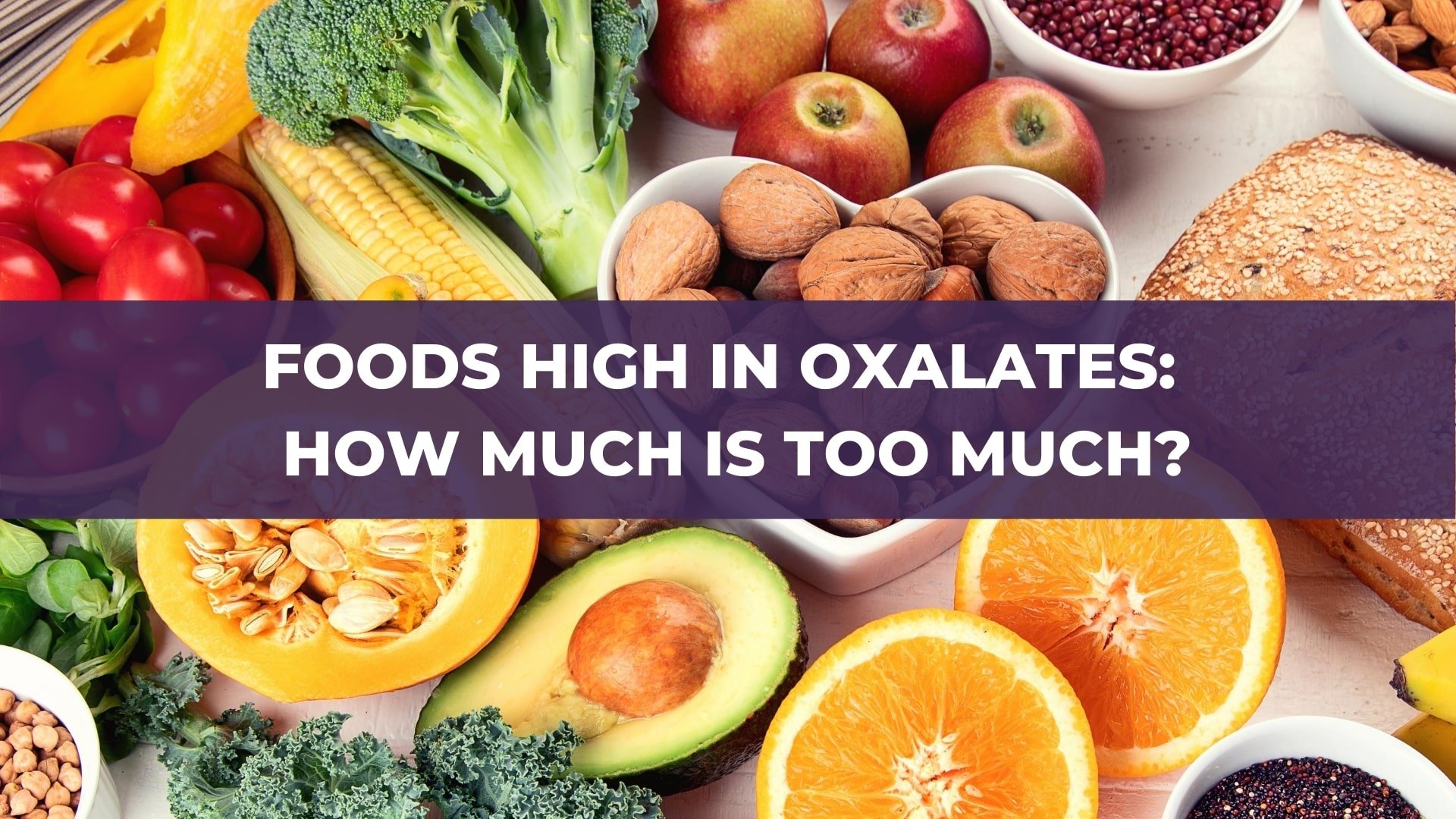
Foods High in Oxalates: How Much is TOO MUCH? - MTHFRSupport Australia

Could You Benefit from a Low Oxalate Diet? - DrJockers.com

Are Oxalates Bad for You? The New Gluten? - Siim Land
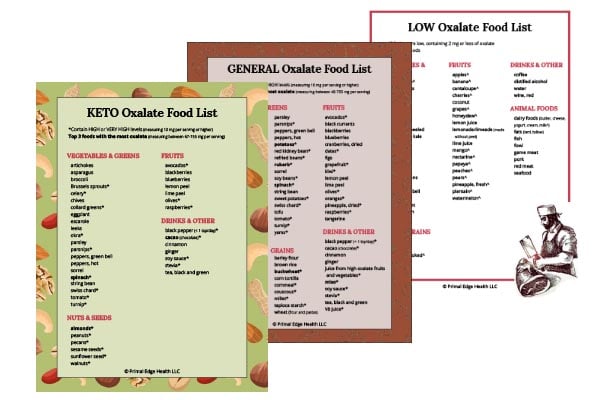
High & Low Oxalate Food List | Primal Edge Health
Avoid Limit

Living Low Oxalate: When Oxalate Rich Foods Destroy Your Health by Melinda Keen
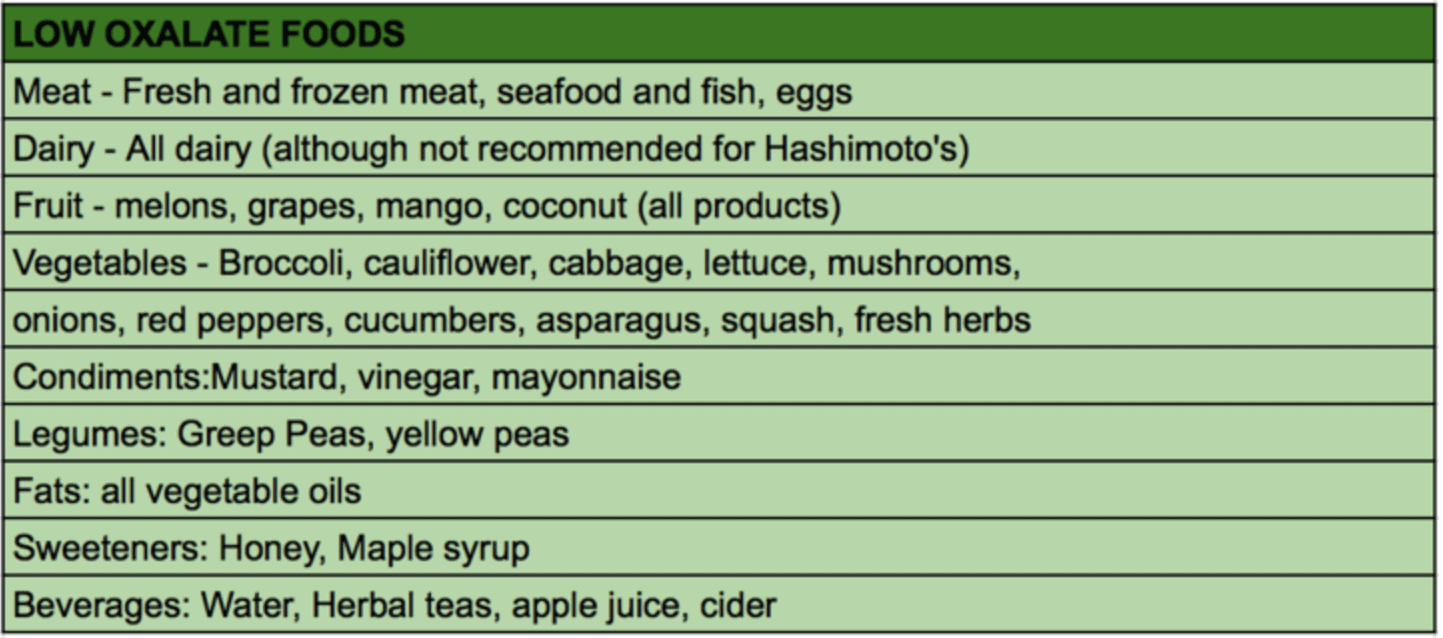
oxalate food chart 2018 - Yerse
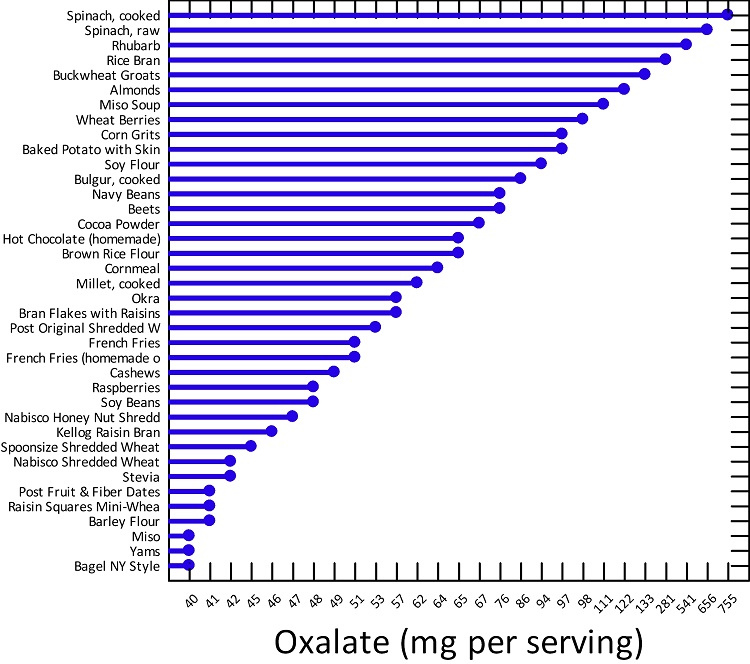
Marginally Insufficient Thiamine Intake and Oxalates - Hormones Matter

Could You Benefit from a Low Oxalate Diet? - DrJockers.com

Could You Benefit from a Low Oxalate Diet? - DrJockers.com

Low-Oxalate Diet: One Way to Keep Away Kidney Stones
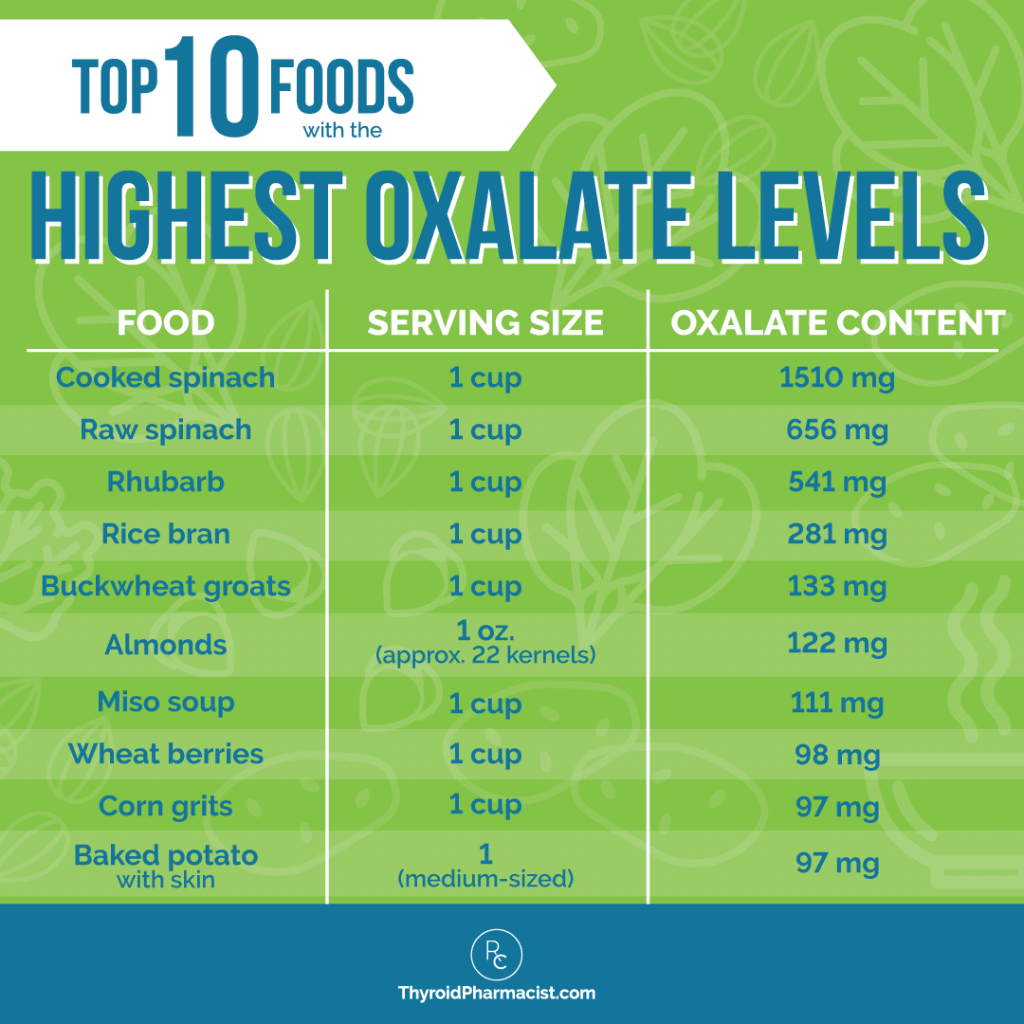
How Oxalates Affect Thyroid Health - Dr. Izabella Wentz, PharmD -

Help Prevent Kidney Stones with a Low-Oxalate Diet | UPMC

WHY EAT A LOW OXALATE DIET? | Kidney Stone Evaluation And Treatment Program
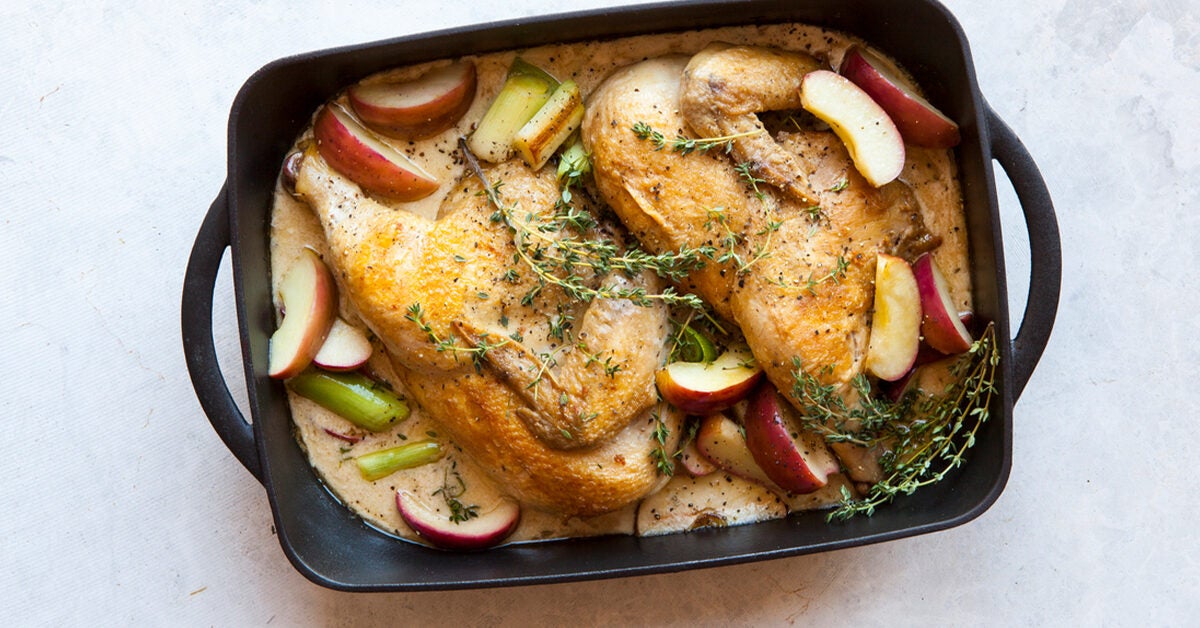
Low Oxalate Diet: Overview, Food Lists, and How It Works
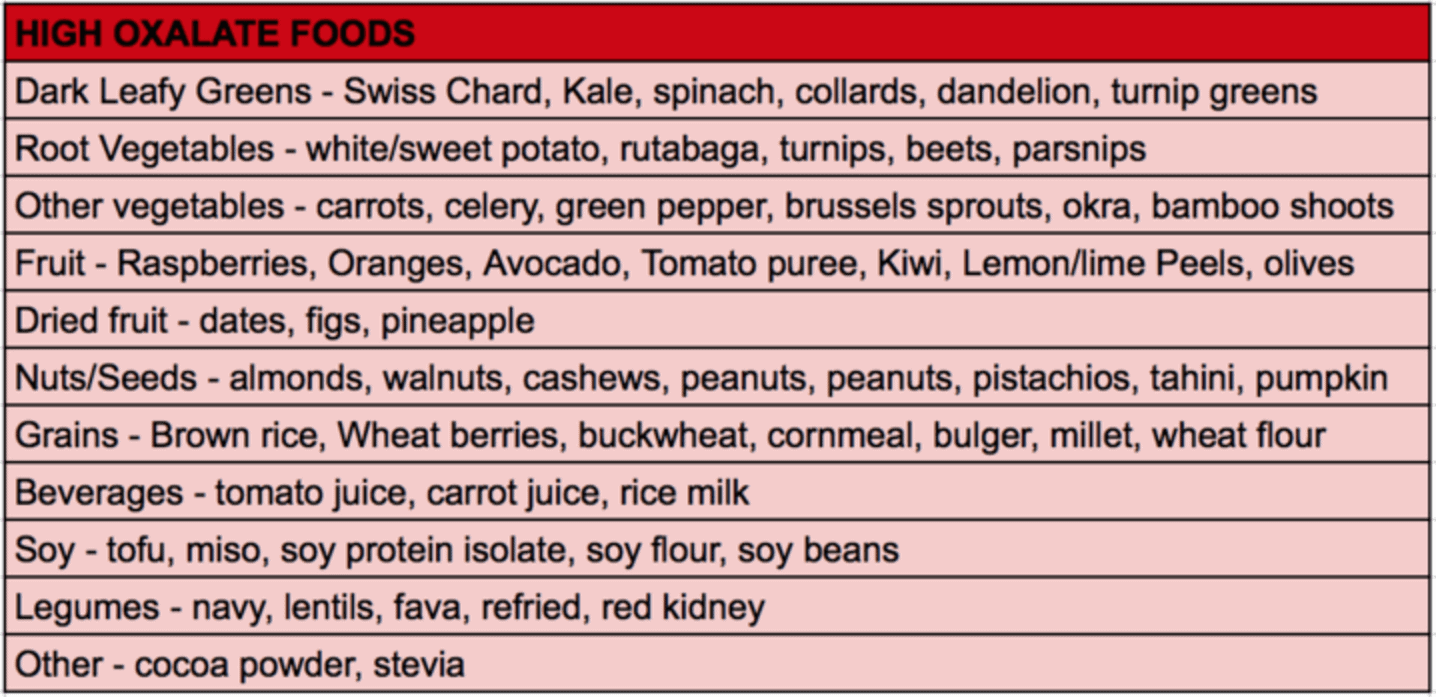
oxalate food chart 2018 - Yerse

30 Low Phosphorus Diet ideas | kidney recipes, low phosphorus diet, kidney diet

Oxalate Food Chart – Updated Low & High Oxalate Pdfs – PainSpy

How To Eat A Low Oxalate Diet | Kidney Stone Evaluation And Treatment Program
Oxalates & Chronic Disease: How the healthy foods you love may be making you sick - BioIndividual Nutrition Institute
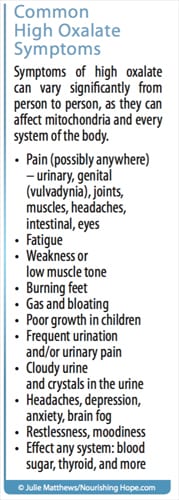
Oxalates: Their Influence on Chronic Disease - Nourishing Hope

Cooked your greens rich in oxalates to prevent kidney stones | Motherhealth

Nutrients | Free Full-Text | Calcium Oxalate Nephrolithiasis and Gut Microbiota: Not just a Gut-Kidney Axis. A Nutritional Perspective | HTML

Low Oxalate Diet. Cereals and Cereal Products. Milk and Milk Products - PDF Free Download

10 Plant Foods You May Have to Avoid | Deanna Minich
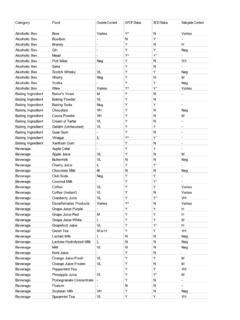
The Low Oxalate Diet - Leigh Ann Chapman ND | The low oxalate diet | PDF4PRO

How To Eat A Low Oxalate Diet | Kidney Stone Evaluation And Treatment Program

Real Food Real Results: Gluten-Free, Low-Oxalate, Nutrient-Rich Recipes: Keen, Melinda: 9781517478537: Amazon.com: Books

Could You Benefit from a Low Oxalate Diet? - DrJockers.com

Oxalic Acid Derivative - an overview | ScienceDirect Topics

Low-Oxalate Cookbook: Osteoporosis, Fibromyalgia, Kidney Stones (Cooking for Health) (Volume 1): 9781910115589: Medicine & Health Science Books @ Amazon.com
kale – high or low oxalate?
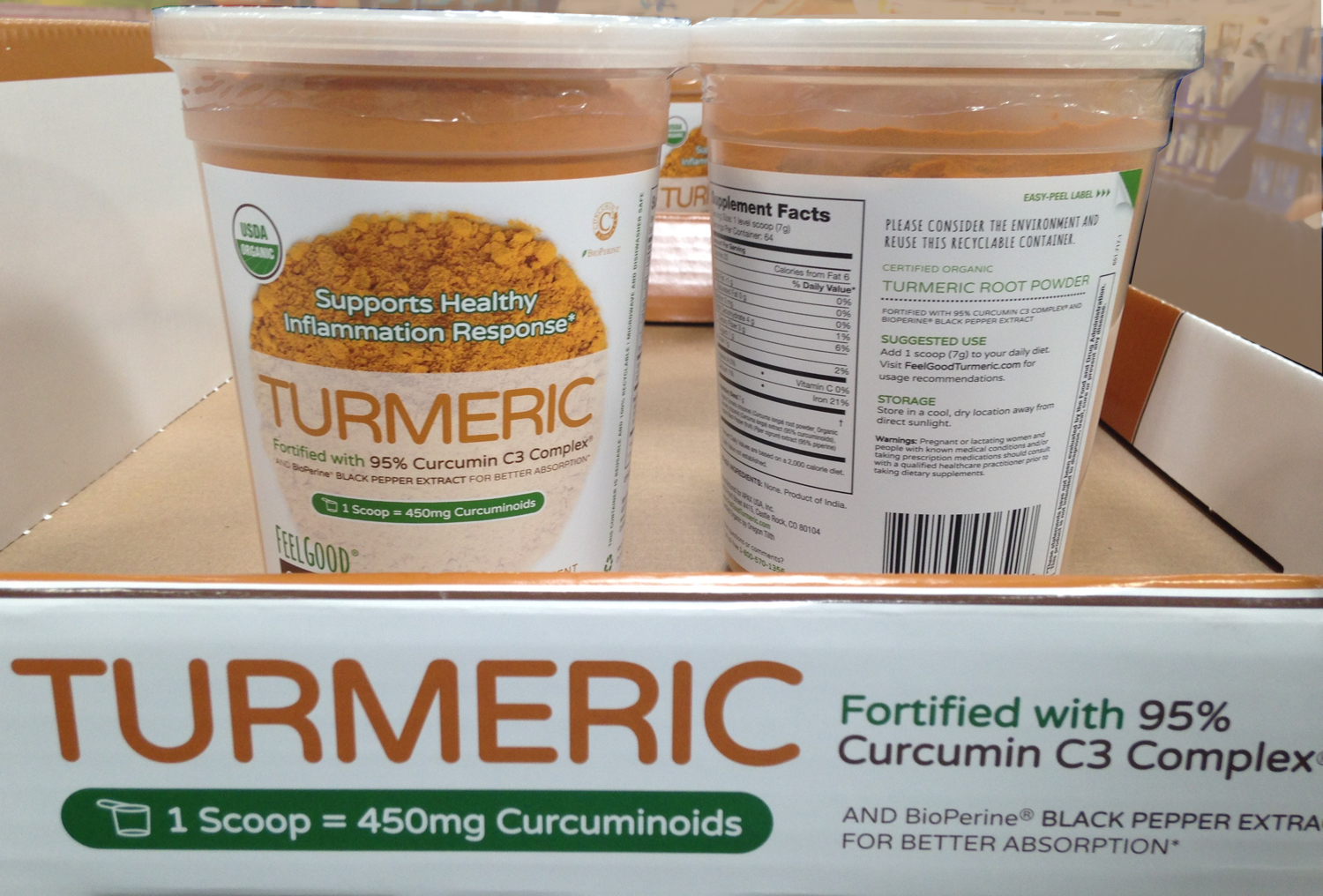
Which spices are high in oxalate? - Sally K. Norton

Should You Try a Low-Oxalate Diet? Part 1 - Dr. Susanne - Wellness For Life
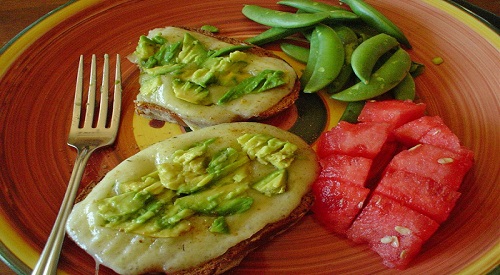
Low Oxalate Foods You can Master – PainSpy

oxalate food chart 2018 - Yerse

Oxalate 2008 | Desserts | Candy
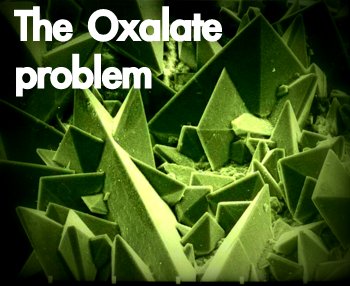
A cautionary tale about foods high in oxalates-it's about moderation - Stop The Thyroid Madness
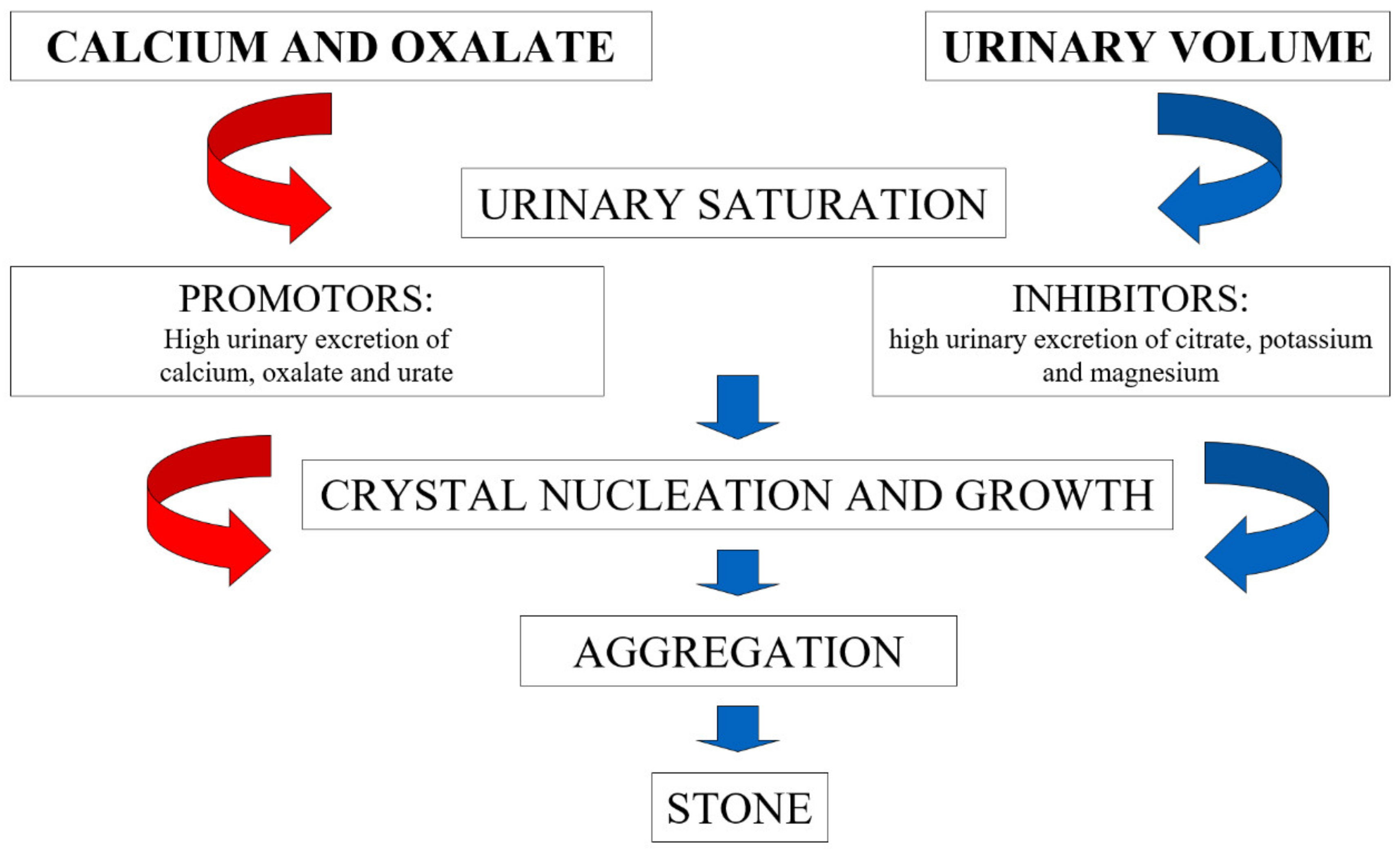
Nutrients | Free Full-Text | Risk of Kidney Stones: Influence of Dietary Factors, Dietary Patterns, and Vegetarian–Vegan Diets | HTML
Posting Komentar untuk "low oxalate foods list 2016"